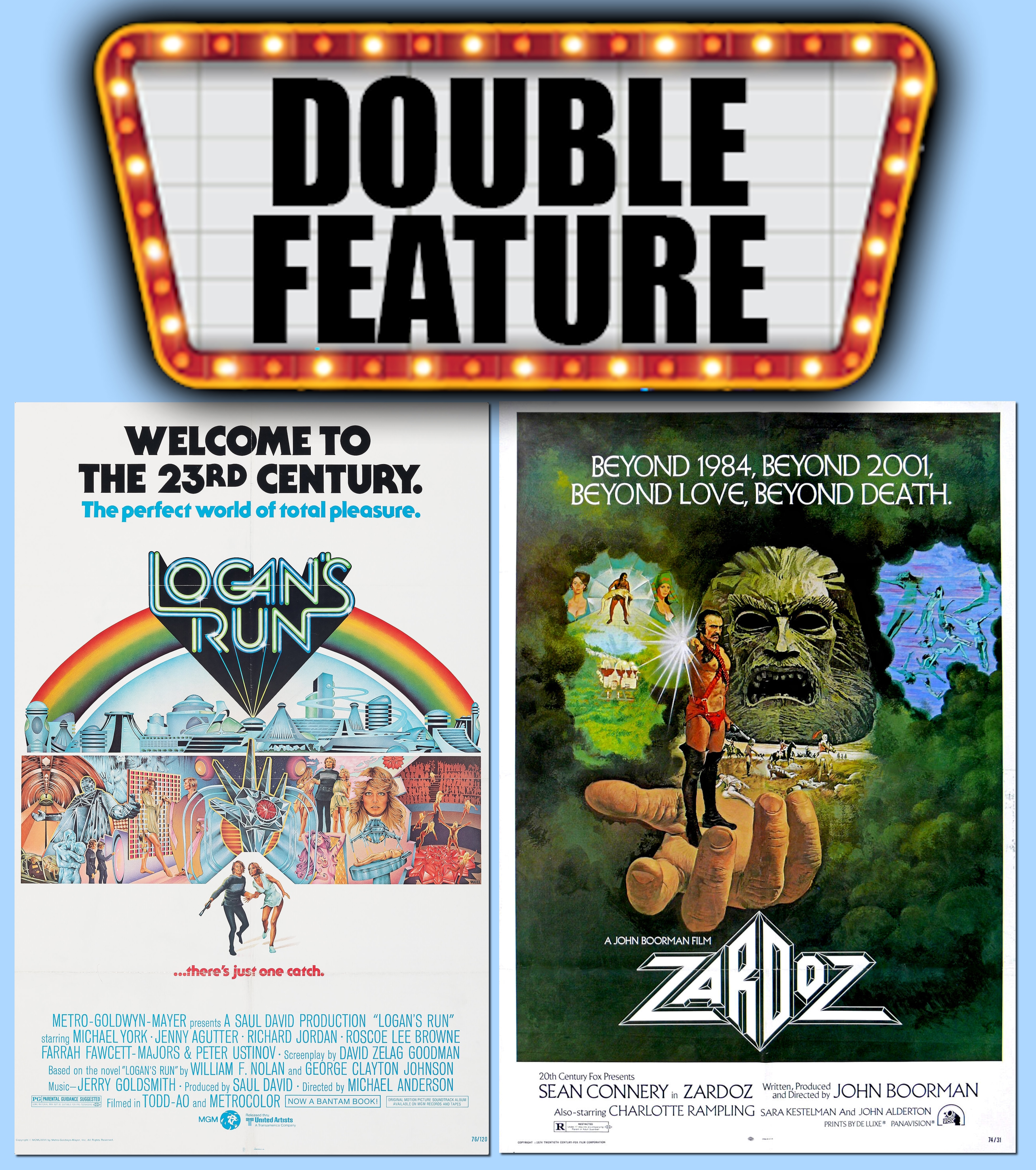Zardoz (1974) & Logan’s Run (1976): When Utopia Turns Against You

The 1970s was a fertile decade for science fiction, but not the kind of sci-fi filled with starships and laser battles. Instead, filmmakers used the genre to question authority, probe cultural anxieties, and imagine what might happen if humanity’s grand attempts at utopia backfired. Two films—John Boorman’s Zardoz (1974) and Michael Anderson’s Logan’s Run (1976)—stand as vivid, wildly different explorations of the same idea: what if paradise is really a prison?
Pairing them for a double feature isn’t just fun because of the bizarre costumes, surreal set pieces, and dated-but-charming effects. Together, they form a mirror image of how 1970s science fiction wrestled with questions of control, technology, and freedom.
Enforcers Who Rebel
Both stories begin with protagonists firmly inside the system. Sean Connery’s Zed is bred to be an “Exterminator,” a brutal enforcer who serves the stone godhead Zardoz by killing the weak. Michael York’s Logan 5 is a Sandman, responsible for hunting down “Runners” who refuse to submit to the ritual of Carousel, where citizens die at thirty. Each man starts as a tool of the regime, but curiosity and disillusionment spark rebellion. The journeys that follow are less about fighting enemies than about uncovering truth and identity—a recurring theme in 70s sci-fi.
The Tyranny of Technology
In both films, technology is less liberating than suffocating. Zardoz features the Tabernacle, a crystalline supercomputer that stores the consciousness of the immortal Eternals, ensuring their stagnant society never changes. Logan’s Run imagines a world ruled by a central computer that tracks every citizen with a glowing crystal embedded in their palms. When it darkens, life is over. These devices are more than props—they’re metaphors for the creeping fear of surveillance, automation, and the loss of free will in a decade still adjusting to the computer age.
Ritualized Death
Each society depends on ritualized violence to maintain order. In Zardoz, the immortals punish dissent with “Aging,” condemning rebels to centuries of senility, while the Brutals outside the Vortex are exterminated like vermin. Logan’s Run stages death as a circus: Carousel, where citizens believe they will be “renewed,” but are really vaporized for the sake of population control. Both films use spectacle to expose how easily societies mask cruelty as tradition.
False Utopias
On the surface, both worlds look like utopias. The Vortex of Zardoz is lush and filled with art, while the City of Domes in Logan’s Run offers endless leisure, beauty, and sex. But these surfaces conceal rot. The Eternals are spiritually dead, cursed by endless life. The citizens of Logan’s city live in ignorance, happily marching to their deaths at thirty. Each film reveals its paradise as an elaborate mechanism for control, built on lies and maintained by fear.
Nature Reclaimed
The conclusion of both films points away from technology and back toward nature. Zed dismantles the Tabernacle and frees humanity from immortality, while Logan and Jessica discover a ruined Washington, D.C., overgrown but alive, proving that the outside world is still habitable. In both stories, freedom comes only when humans abandon artificial control and return to the organic rhythms of the earth.
Why These Two Belong Together
Zardoz and Logan’s Run make an oddly perfect double bill. One is surreal, philosophical, and almost avant-garde; the other is a glossy MGM production with romance and adventure at its core. One deals with the curse of never dying, the other with the terror of dying too soon. Side by side, they showcase the wide imaginative range of 1970s dystopian cinema, a time when sci-fi was less about spaceships and more about what kind of society we were building for ourselves.
Watching them together is more than a nostalgia trip—it’s a reminder that the questions they raise about technology, control, and freedom are still with us. Which world would you rather live in: the City of Domes with its enforced youth, or the Vortex with its suffocating immortality? Either way, the price of paradise might be too high.


